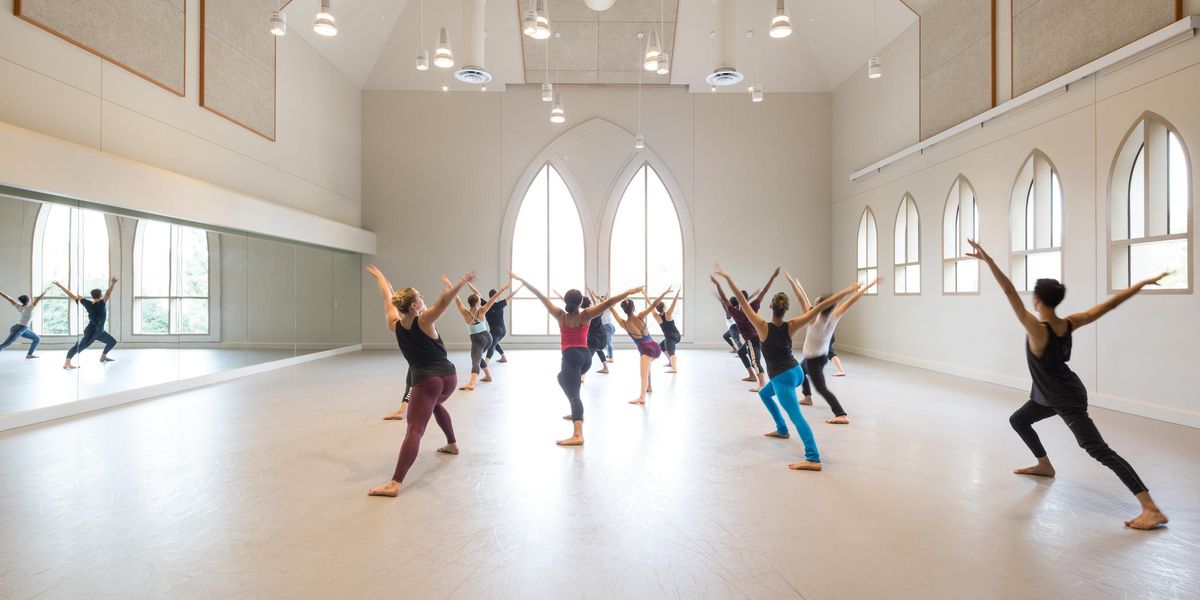Making It Happen: Ballet's Ivy League Laboratory
Ballet’s Ivy League Laboratory
Members of Columbia Ballet Collaborative in Emery LeCrone’s Five Songs for Piano.
Matthew Murphy, Courtesy CBC
After the highly praised premiere of his Year of the Rabbit last October, many people know the name of New York City Ballet corps member and up-and-coming choreographer Justin Peck. But fewer realize that Peck got his dance-making start at a small, student-run troupe: the Columbia Ballet Collaborative (see “Taking Off,” April 2011).
Founded in 2007 by five Columbia University students who had danced for companies like Pennsylvania Ballet and North Carolina Dance Theatre, CBC provides a platform for accomplished classical dancers to keep performing while pursing their education. It has also become an unlikely incubator for new creative voices, rare to begin with in ballet. In addition to Peck—whose 2009 pas de deux for CBC caught the attention of NYCB’s artistic director, Peter Martins—the increasingly in-demand choreographer Emery LeCrone has made eight original works for the troupe and serves as resident artist.
CBC is composed of students from the university’s four undergraduate colleges: Columbia, Barnard, Engineering and Applied Science, and General Studies (a program for returning and nontraditional students). Its current members have danced with companies like Boston Ballet, NYCB, Miami City Ballet, and Royal Danish Ballet. The troupe holds auditions twice a year for its fall and spring shows—31 dancers was the largest cast to date—and members rehearse two hours per week per piece. They also give a free open ballet class for the Columbia community every Saturday and teach dance to second-graders as part of a public school outreach program.
Artistic director Ariana Lott insists that CBC is intended to supplement, not substitute, what’s offered at Barnard, home to the university’s dance department. A double major in biology and dance, she says the department is very supportive, lending the group costumes and studio space. Most CBC members, she notes, study technique at Barnard and dance in departmental showcases.
But CBC arose out of a perceived lack of regular performance opportunities for classical and contemporary ballet dancers. “What the students wanted, they created—that was the genesis of CBC,” says Katie Glasner, assistant chair of the Barnard dance department and a faculty advisor to the collaborative since its inception. “That it’s flourished is a great testament to its founders and students.”
And flourished it has. Thanks to the caliber of dancing and occasional big names on the bill, CBC shows have attracted considerable attention. They often take place at well-known venues like Columbia’s Miller Theater or Manhattan Movement and Arts Center. Another distinguishing feature is CBC’s commitment to presenting new work, which has grown even stronger in recent years. Every show includes premieres by both student and outside choreographers.
“When I came to CBC I had never been part of the creation of a new work,” says Lott, adding that this is also true for some members who have danced professionally. “In ballet you do a lot of Sleeping Beauty, things that have been around for hundreds of years. So it’s nice to be part of something new and see how people’s minds work.”
And emerging choreographers benefit from having a built-in laboratory. “CBC provides the raw materials for anyone who wants to make dances,” LeCrone says. “It’s a place where I’ve had the opportunity to play and learn.” Glasner thinks this is filling a void. “I really believe ballet choreographers need an experimental ground like CBC,” she says.
But as much as it values innovation, CBC also strives to expose the Columbia community to the ballet canon. (Its upcoming shows on May 4 and 5 will include excerpts from The Four Temperaments, with permission of the Balanchine Trust.) After all, CBC isn’t just about keeping ballet in its members’ lives through college, but also bringing it into the lives of others. “We’re trying to make it more accessible to students,” Lott says. “I hope they come see one of our shows and think, Maybe I will go to a ballet or try another dance thing. And maybe down the line they will be a supporter of the arts.”




